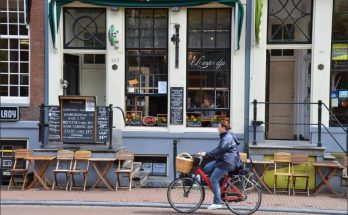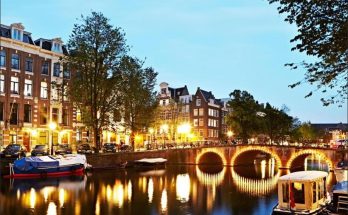The castle originated as a military fortification, a stone house, moated and walled, able to withstand a siege and afford protection to its inhabitants. The walls and towers were provided with boulevards, loop-holes, and battlements. The single gate, likewise fortified with towers, was closed by iron-studded doors to which a drawbridge gave access.
Within this fortress was yet another massive main tower, which, should the enemy have succeeded in storming and capturing the moats and walls, acted as a fortress within a fortress. The walls of these castle towers, called donjons (dominiones) were sometimes many feet thick. The knight and his men could entrench themselves in the higher storeys of this tower, remove the ladders, and defend themselves from above against their attackers.
It is obvious that the castles were destined to lose much of their warlike character and the nobles much of their military power when the invention of gunpowder rendered the castle walls no longer proof against artillery. It thus follows that the character of the castles gradually changed. Some of the oldest fortresses, devoid of any form of comfort and often situated in desolate spots, difficult of access, were abandoned and soon fell into decay.
The ruins of these castles have in many cases been preserved up to the present day, thanks to the solid construction of the walls. Others were completely rebuilt, so that their military character gave place to a totally different aspect, that of the manor house where the knight, having become a territorial lord, lived amidst his lands, dependents, and peasants.
Such manor houses sometimes retain in their masonry sections of the former castles while the remainder of the building, in the course of the centuries, was constantly adapted to suit changing tastes and varying requirements. There were also cases in which at a certain period the entire castle buildings were pulled down, and on the site of the old fortress, or in the vicinity, a completely new manor house arose, in no way recalling the ancient military fortification but bearing wholly the character of a rich nobleman’s country residence.
We see finally how, in the seventeenth and eighteenth centuries especially, entirely new castles or manor houses were built, not only by the great landowning noble families, but very often by the nouveau riche merchants who desired to have a country residence for the summer months in addition to their town house. They are mainly found on the banks of the Vecht and the Amstel, although their number, especially along the Amstel, has alarmingly decreased since the end of the last century.
A new development has arisen in modern times. Many of the castles and manor houses inhabited by the same family for generations are being abandoned now that their upkeep is becoming increasingly difficult as a result of changed social conditions and heavier taxes. These castles then once more decay or are transformed into hotels, youth hostels, monasteries, institutional or community buildings. They are ill suited for such purposes, and in consequence they slowly but surely lose their distinctive character and atmosphere. The Netherlands is very rich in castles–we should perhaps say that it is still rich in castles.
It is precisely this abundance which endangers their continued existence. Indeed, the number of castles which are still inhabited and well kept up continues to shrink alarmingly, despite the considerable interest in castles and old manor houses which undoubtedly exists. Interest alone cannot check the threatening decay of Dutch castles. In some countries this danger has been recognised in time and the authorities have realised that the cheapest and most effective means of preserving these castles is to ensure that they remain inhabited. Let us hope that this solution will dawn upon the Dutch authorities in the very near future. It is high time that it should.
The Netherlands is poor in castles which have preserved their medieval character for they were mostly converted later from castle to manor house, and thus lost their original function of fortress. This is only partly true of the Old Loo, built in the 15th and 16th centuries. The castle Bergh at ‘s-Heerenberg is even older in plan as is also the impressive Hoensbroek. Despite the encircling water, the castle of Almelo is a typical pleasure house of 1662, surrounded by a wooded park which now borders on the built-up area of the modern industrial city.
The most important castle in the Netherlands was undoubtedly the Valkhof in Nijmegen, founded by Charlemagne as a royal palace and restored by Barbarossa in 1155. It was unfortunately pulled down in 1796, except for a few small parts. The house at Hernen is one of the best preserved medieval castles in the Netherlands, as is also the castle of Croy in North Brabant, which is a late-medieval product of the Burgundian culture.
Castles have become rare in Friesland and Groningen; one of the few that remain is the Freylemaborg at Slochteren. 380. In the Middle Ages Valkenburg possessed a castle perched upon a high hill; of this only a picturesque ruin survives. The castles of Renswoude and of Middachten are real pleasure houses with gardens laid out in the Dutch version of the French style.



